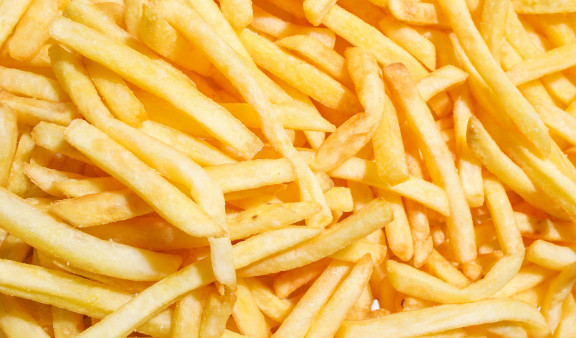
How the last mile could be the best mile
Bengt Wessborg gives his views on why the last mile might soon be the best mile - or if you like, an outlook on the future of last mile and recommerce.
E-commerce has truly been booming the past two decades and has turned into a multitude of established sales channels that have created a whole industry. Today, this industry includes a whole ecosystem of e-commerce solutions including support solutions and consultants. It has also meant that the perspective of e-commerce is now much wider than just selling stuff online. It’s a mix of products and services, and also an end-to-end perspective of the product journey where you trace the product you sell from its birth until it ends up in the garbage one day. It is also a blend of different touchpoints that the customer has with the company. This is often referred to as cross channel, omnichannel or unified commerce. Accepting this perspective means that you as a product or service provider also accept taking greater responsibility for the whole customer journey, making sure that the customer experience is great all throughout.
The challenges with this has multiple aspects. You will need systems that provide you with possibilities to improve, you will need great logistics partners, and you will need a business model tailor-made for the new ways things can be sold, delivered and returned. You will also be needing simple user interfaces for the end user, making it easy to choose different options and be involved during the different touchpoints and their different journeys. The customer needs information in real time in a transparent manner, and also the possibility for smooth dialogues and solutions if things go wrong. The seller company also needs user-friendly tools, routines and processes to be able to serve high volumes of customers in a cost-effective way.
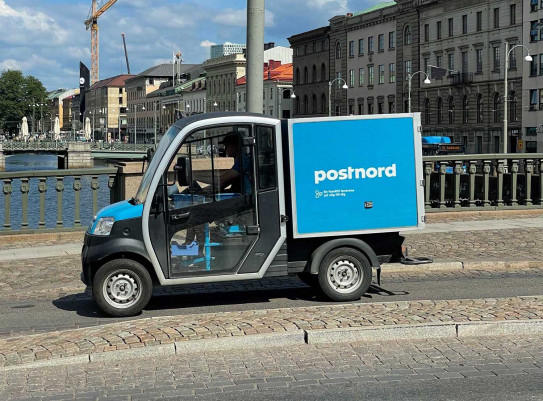
E-commerce going into the third decade after the millennium also has environmental and ethical aspects. More companies today are more value-driven than before and many have set environmental goals in order to become climate neutral over time. Sweden as a country is no different when it comes to environmental ambitions. In fact, 98% of all air pollution in cities all over the world comes from fossil fuel – mainly from cars, trucks and buses. Thus, the current trend is that everything in society is becoming more and more electrified. For example, in the picture what you see is a PostNord electrified vehicle with a last-mile delivery in the central area of Gothenburg city, summer 2022. This is just an example, but interesting from several different aspects. One is that e-commerce today is becoming ever more international. More customers than ever before are buying things online from abroad. However, the big international delivery companies have complex (and probably old) systems, they are facing large challenges when it comes to a good customer experience for their last mile deliveries to the customer's home, stores, pick-up points etc. The end customer has no way to contact the delivery staff, there is no or little transparency around when the order will be delivered and it is sometimes somewhat unclear if and how you can change delivery points after the order is placed. Not only that, the communication around the delivery is complicated and lacking in quality; wrong language, bureaucratic manners, long tracking numbers and with poor user interfaces where it’s difficult to understand how to use it at all.
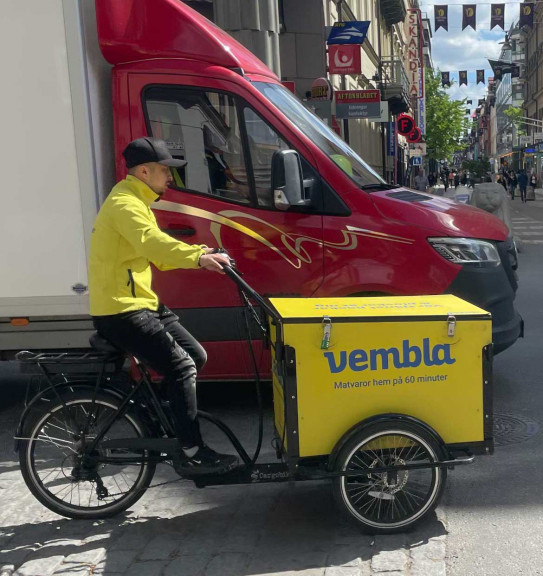
Also, many of the big delivery operators cannot offer modern last mile deliveries locally in different countries. Of course, a solution could be to co-operate with other local players (like PostNord in Sweden) to provide a more environmentally friendly and flexible delivery. The next aspect is the environment. The city of Gothenburg, our home city for SQLI Nordics, is currently in the process of rebuilding most of the central urban area and has set tough environmental goals that will affect commerce going forward. The city is rebuilding most of the streets and making them more walk-, bicycle- and electric scooter-friendly. On top of that, an environmental zone around the inner city is being created, so that no vehicles whatsoever (not even transport vehicles) will be allowed to enter with fossil-driven units into the city. Only electric vehicles will be allowed in different forms.
Not only that, the taxes of the vehicles forbidden in the inner zones will be much higher and as a result, the secondhand value of these vehicles will decrease dramatically. Who wants to own a vehicle that you can’t even use in central urban areas? This means that last mile deliveries operations will continue to grow significantly the coming years, and ironically enough they will be at a lower cost and also better for the environment while providing lower noise for people living in cities - but also with a higher delivery capacity and flexibility for customers.
I predict that customer experience quality will improve radically when it comes to deliveries in the coming years. With new delivery options also comes new opportunities – and expectations. Companies with visions around unified commerce will be able to better deliver on those opportunities and expectations. Systems capable of providing real-time data and stock balance, with very cheap, fast, flexible and environmentally friendly delivery options will create exciting things for us within e-commerce. Online players with “endless aisle” visions will see new light when it’s possible to send things to stores the same day from their warehouses, from other stores, pick up points - or maybe even other customers. There will be new options also for returns. You will be able to do a return from your home or even office where a service picks up the return for you. I also predict a future in the longer run, where returns will happen directly between customers. This means that a customer, instead of doing the return, will be able to hold onto the product a little while, and when it’s time to create the return, they will get a return instruction from the selling company. This return will make it possible for the customer to send the order directly to another customer without the need of passing through the selling companies' logistics, stores or warehouses. Customers will also be able to take on extra work (like working for Uber Eats) and get paid for delivering return orders to different customers and stores with modern electric vehicles or even on foot and via subways in bigger cities. These delivery couriers will be able to see the orders to pick up and deliver via an app or similar service. Of course, there will be commercial companies doing this too, but there will be room for gig delivery alternatives as well. I also see a new type of store on the rise – players that sell secondhand products, and especially quality ones due to their higher secondhand value. Their current products could also be mixed with return orders that can be sold locally in these stores if the original selling company for different reasons don’t want them back in store. Then the products will effectively - and cheaply - be moved into a new type of store. What was a pure e-commerce transaction just before is all of the sudden to be found, for instance, in shopping malls and in stores in commercial urban areas. Of course, these new possibilities can also provide a boost for peer-to-peer commerce between consumers with the help of a commercial middleman. This will also provide additional benefits for the buyer, as the middle player here can qualify the item before its sold, so the fraud risks are kept to an absolute minimum.
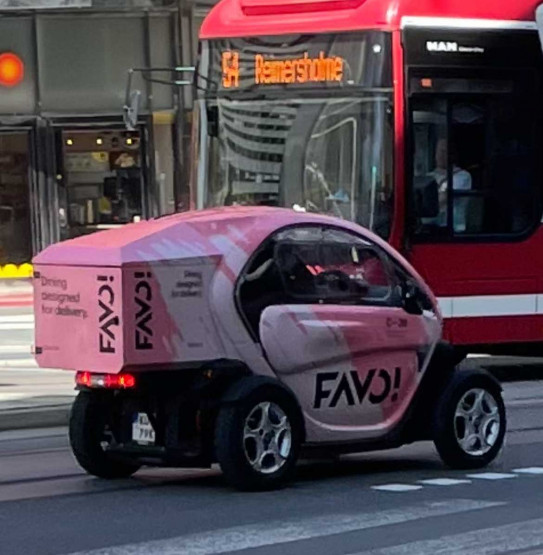
So, what’s happening already today in the market around this? I would say - a lot. If you look at the check-out of most e-commerce stores you can nowadays often see a delivery check-out. That might not seem revolutionary but - it kind of is. While the delivery itself might look very different from case to case, it means that both the technical as well organizational prerequisites have matured substantially over the last years. This doesn’t only mean that you as a customer can chose between different delivery options, but often also how returns can be made. We can also see that the number of delivery options is often decreasing, removing clutter for the end customer. Premium deliveries must not always be free either – it’s a service that most customers understand cost more and are willing to pay for. This is especially true if there are several different delivery alternatives on offer. You might be in a hurry and really want a fast delivery to your office. And in such a situation you are willing to pay more. You might on the other hand not be in a hurry, so you want to choose a cheaper delivery method with longer delivery times, and maybe also a more environmentally friendly one.
One of the most recurring problems for e-retailers is high levels of returns. In fact, according to logistics company Droppa, returns are four times more common within e-commerce compared to items bought in a physical store. And fashion is definitely no exception. In reality, around 30 percent is a typical return rate for fashion purchases. Over 12 million returns are made annually in the Nordics alone. And as around 65 percent of retailers manage their returns manually, they are of course extremely time-consuming. The grievances of making returns also stops some customers from buying online, meaning that if returns could be handled in a better way, conversion rate would increase. An example of this is logistics actor Droppa, that connects online players with drop zones centrally in cities like 7/11 and the Swedish kiosk chain Pressbyrån. When an online shopper wants to make a return, they can just visit one of a thousand different drop spots, scan a QR code there and just ”drop” the item off. The items are put in a special delivery bag available on site - and the return is done. Very convenient for the customer and then the magic happens behind the scenes. Droppa can then re-pack all the dropped goods to be able to optimize the different routes and logistics around the returns. This will lower the handling cost and opens up new possible scenarios for the selling company. Alternatives like this will grow going forward when volumes increase, and more companies are connected. Already, companies such as Babyland and Apotea are using Droppa.
Another example that could be a game changer for e-commerce is Einride, with its more than 1000 electrified trucks for heavy transport. Today, they have around 40 large customers such as Maersk, Electrolux and Oatly. The Einride logistics system uses driverless ”pods” and a network of charging poles to deliver their services. According to the Swedish business newspaper DI, they were the first company to test their self-driving pods on public roads in Sweden, and recently they were also first to be granted permission to use such vehicles on public roads in the US. In the near future, heavy autonomous transporters like these will increase rapidly between logistics centers and stores and warehouses and Einride aims to be one of the big players. The self-driving vehicles are surveilled on a distance, just like airplanes, and if needed, the operator can steer the vehicles at a distance. But the vision is that the vehicles shall be totally self-driving in the near future.
Another day-fresh example is related to e-commerce and delivery with drones. This summer, McDonalds in Gustavsberg outside Stockholm built a landing spot for Foodoras drone ”Droona”. The drones will be available as a delivery option in the Foodora App if you're in the area and is a way for Foodora to reach even more customers in Sweden, where the vision is to have almost 100 percent reach with fast deliveries. Joachim Knudsen, CEO of McDonalds Sweden, states that convenience is more important than ever for their customers, and a flying burger might be able to exceed customer expectations when chilling at the beach. The Droona drone that will be used for deliveries is currently able to fly 2 kilometers and soon there will be new models tested with longer reach. These first models will fly with a speed of 10 meters per second, 120 meters above the ground and can carry loads of up to 2,7 kilos (or if you like, 12 Big Macs).
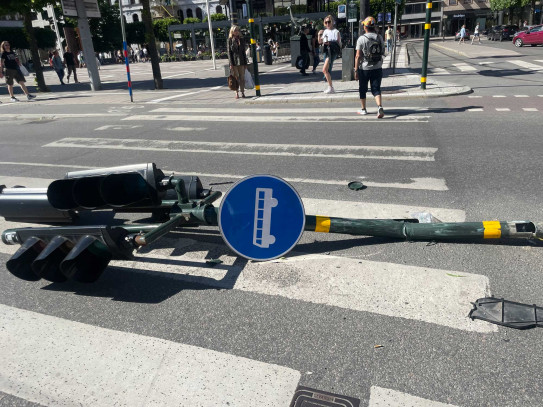
When it comes to self-driving vehicles and drones, there is a lot of skepticism. Will it really work? There are of course challenges to tackle, but I have no doubt it actually will. When it comes to true innovation, we tend to focus on the challenges since we haven’t tackled them before. But just try hard enough and there are often solutions to them. And we usually forget that the things we take for granted today are not problem-free at all. How many car accidents are there in the world every day? And yet, no one is trying to forbid cars (at least not for that reason). Maybe drones one day will fly into seagulls. But then we might need to compensate the Seagulls with a lot of good food (in my experience, they usually prefer McDonalds anyway 😉), a really nice bird nest or whatever they appreciate. I mean, the buses are still running in the streets even after the pictured incident.
Last mile deliveries becomes more and more important everyday, and that goes for both B2C and B2B deliveries. Something that doesn't work very well historically is the transparency and the precision of the delivery. The information you get as a buyer is often that the delivery will take "3-5 days" and that "you will be notified before the delivery". After that there is simply no communication, or at best you can see in some sort of delivery portal that the goods are being packaged, or has left the terminal. Notifications, visibility and communication around the delivery simply does not exist. One way to handle this problem is like Widriksson Logistik handle it for their customers and drivers. They offer an app for their drivers which simplifies the delivery process, provides more updates and decreases errors in their deliveries. Beside containing delivery and route planning for the driver, it also allows for communication directly with the end customer.
Another market that is still in its infancy is flying cars. The initiatives might be many, but very few (no?) commercial examples exist at scale. However, it will soon be booming since it’s an area that many are exploring and trying to find a way into the market. Rumors around Dubai, Singapore, Tokyo, Shanghai and other megacities are saying that test flying is taking place already. If you search YouTube or google the phrase “Flying cars” you will get tons of videos and exciting information. To me, the question is not if, but when someone finds a way forward that is safe and commercially sound. Then others will quickly follow.
When this happens, it will revolutionize not only personal transportation but also goods and last mile deliveries will be distributed in many new ways through the air. Return of goods could actually turn out to be fun! Lucky us. We are living in very exciting times, where we have the chance to experience true innovations that will change the way that we live. “The last mile” sounds really ominous, and bad. Maybe it should be “the best mile” – or “the green mile” (Sorry, Tom Hanks!).
Stay tuned.